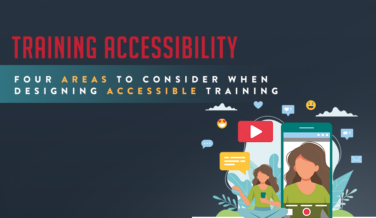Why Your Company Needs To Conduct Training Analysis
When it comes to implementing a new training solution for your business, it is often difficult to settle on a single solution that is right for you. There are a plethora of options available for customer education programs, and they range in cost, seat time, learning outcomes, and many other variables. Thus, when searching for a training solution, the importance of training needs analysis cannot be overstated. To ensure that you are maximizing your budget and outcomes, we suggest you take a two-step approach.
1. Conduct a training needs analysis prior to deciding on a learning solution.
A training needs analysis is a must-have to ensure your company is getting the most from their training programs. Not only will this ensure that your learners stay engaged and invested in the content, but it will also reduce time and money spent on training that is not needed or wanted. Furthermore, by diligently choosing your training, you will be able to plan out your programs for the whole year, which will avoid last-minute issues with making sure your employees get the education they need.
Before considering training solutions, we suggest that you identify your team’s main strengths. This will allow you to simultaneously identify skills that need to be learned and take note of areas where your team excels. If you notice there are particular areas where your employees are excelling, you can use that information to build a training initiative that leverages those skills in order to improve others.
Next, it is important to create a balance between training new skills and improving existing skills. What is most important for your company, and what is most important for your employees? If you can align your training efforts with the professional development efforts of your team, you will be able to better use your budget. For example, if you want to focus on implementing a new technology training program but you also notice that employees are struggling with soft skill development, you can create a training goal that weaves soft skills (such as problem solving) into structured, hard skill training (such as how to use a new software program).
2. Use post-rollout analysis to analyze and improve training programs that have already been implemented.
While successful training analysis prior to solution development is important, a strong analysis strategy for post-rollout measurement is perhaps even more important. You can put significant work into designing the perfect solution, but there still may be unanticipated issues that arise with your learners. Post-rollout training evaluation makes sure that those hiccups don’t happen in the future.
One of the best ways to evaluate training solutions is by assessing their business impact. This means digging deep into the data to find an ROI, whether it be a financial metric or a proficiency metric. Financial metrics allow you to understand just how much money you put into the training compared to how much money you got out. This is typically what upper management will want to see to evaluate training success. On the other hand, proficiency metrics focus more on the learner; were they able to perform tasks that the training specifically focused on? How well? Depending on your company and goals, these metrics may change. There’s no right or wrong answer, just keep in mind that buy-in from management may be contingent on certain metrics.

When developing a successful training analysis strategy, there are just a couple more things to keep in mind. Understanding these common misconceptions can help you take your analysis to the next level.
- A negative ROI doesn’t mean your training failed. Financial proof of training success is great if you can get it, but it is often very difficult to truly prove the positive financial impacts of a training solution. If you begin to find that there is a negative ROI on your learning solutions, don’t worry. This doesn’t mean that your training failed, it may just mean that you need to find a new way to truly appreciate the value of your training, or that your employees simply need a slightly different solution.
- It won’t always be possible to see training results. One of the most difficult (and sometimes frustrating) parts of training analysis is not being able to see visible results. This is especially true with soft skills training, where much of the impact is often lost. This is a common issue that nearly all L&D professionals face, and it should not deter you from developing the training programs that your team needs.
Nearly every business endeavor is made better with metrics and evaluation. Data allow us to gather, analyze, and present clear, detailed information to business leaders and our peers. To ensure you’re getting the most out of your training programs, training evaluation should take place both before and after learning solution development.

Continue reading

Dashe joins ttcInnovations
Learn More
Embracing the Future: Early Adopters of Generative AI for Learning
Learn More
Four Areas To Consider When Designing Accessible Training
Learn MoreCommitted to
finding solutions
